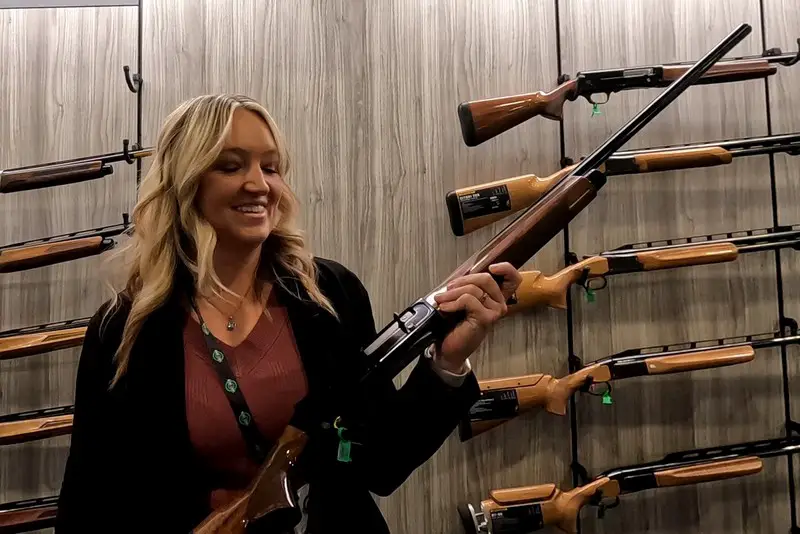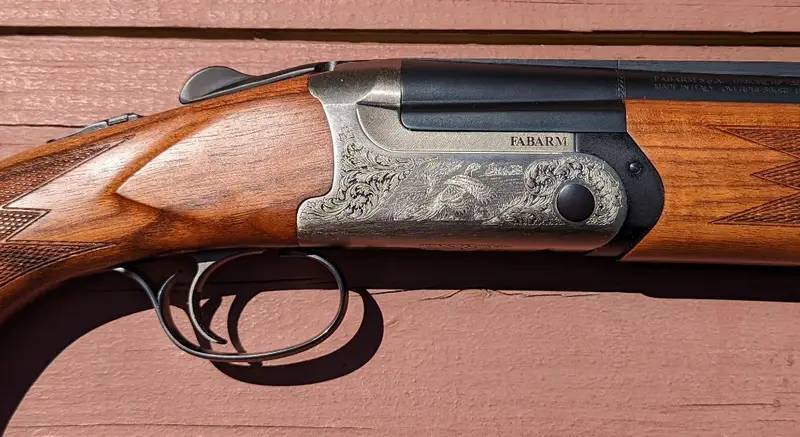|
New Shotguns for 2024  Years back, the mecca for new shotguns offered in the United States was the SHOT Show. That is no longer the case, for now there are mid-year releases, and many brands forego the SHOT show in favor of SCI, the NWTF, and the major clay target shoots. This year, Weatherby did not exhibit at SHOT, joining Perazzi, Caesar Guerini, and several other well-known labels to leave SHOT. Last year, for example, the NWTF event in Nashville had 67,368 attendees. 0.36745 square inches is the area of the 20 gauge bore cartridge internal diameter. The folded length is 2.695 inches, giving us .990 cubic inches of volume. 0.49889 is the area of the 12 gauge cartridge internal diameter. With a folded length of 2.405 inches, that gives us a volume of 1.19983045 cubic inches. With about 82% of the internal volume to work with, this explains why the 3 inch 20 gauge cannot equal the capability of the common 2-3/4 shotshell with the same payload. However, the 20 gauge allows slightly more pressure than the 2-3/4 inch 12 gauge which closes the gap a bit. In terms of real world applications, it means just what it has since the 1960s: 1330 fps or so for 1-1/4 oz. of lead out of the 2-3/4 inch 12 gauge, vs. 1185 fps or so for 1-1/4 oz. out of a 3 inch 20 gauge. This ramble should illuminate one of the dumbest approaches for a hunting shotgun in decades: the 3 inch 28 gauge. Lengthening a small diameter cylinder nets you a poor relative increase in case capacity and the smaller the diameter of the cylinder, the worse it gets. Yet, there is newfound touting of this truly dumb approach. If you want to overpay for ammo that has no potential to compete with a 20 gauge, the 3 inch 28 gauge may be for you. In general, the firearm industry is currently experiencing a decline. Sturm, Ruger & Co. experienced another significant decline in firearms sales during the third quarter as net income dropped 59.6%. Smith & Wesson took a hit in early December, as they posted a profit of $2.5 million, or 5 cents a share, in the quarter ended Oct. 31, compared with $9.6 million, or 21 cents a share, a year earlier. Analysts polled by FactSet expected per-share earnings of 14 cents. Profits seem stressed across the industry, perhaps due to a continuation of the post-pandemic lull along with nagging supply chain issues. This helps to explain why new model introductions for 2024 are a bit light, as manufacturers try to right-size production and inventory levels. More Disappointments I've written quite a bit about the bargain Impala Plus 12 gauge shotgun. Although I was told that a 20 gauge was “ready to go” last year, and later that it would be announced at SHOT, so far it is vaporware and the manufacturer, Istanbul Arms, was unable to tell me so much as the approximate weight of their rumored 20 gauge. They don't seem to be interested in moving ahead in the U. S. market, for all they currently show are 24 inch plastic-stocked 12 gauges: https://kfifirearms.com/impala-plus/ . Let's just call this uninspiring. There is something about certain brands of shotguns that appeals to the low-information or gullible shotgun buyer. Once pellets are launched from a tube or barrel, no barrel can possibly have any effect on downrange ballistics. Shotguns, of course, launch pellets into the air, not rocket-propelled grenades. Yet, the jokewads at Benelli have no problem violating Newton's First Low of Motion, claiming (evidence-free) that pellets thrown out of a Benelli Advanced Impact barrel lose less velocity in flight than pellets launched from other barrels. No matter what a shotgun barrel is, or what a choke is, no word salad can change the obvious: once the shot leaves the barrel, the barrel has zero influence on anything downrange. A 50 fps 3 ft. velocity increase with 1400 fps #2 Steel is only 13 fps at 40 yards. If you want to get massively ripped off, now is your chance at just $3399: https://www.benelliusa.com/shotguns/performance-shop-ethos-sport-ai-shotguns . If Benelli's fraudulent claims were true, Benelli A.I. Barrels would have to be banned from most trap and skeet fields, for the obvious safety reasons. Better News
The long-awaited Browning A5 20 gauge has been announced. Touted as 5 lbs. 11 oz. at the SHOT Show, now the weight for the 26 inch barrel version is down to 5 lbs. 9 oz. on the Browning website: https://www.browning.com/products/firearms/shotguns/a5/a5-hunter-20-gauge.html . I think Browning has a big winner on their hands here: I enjoyed breaking a few clays with it. Perhaps it will lose even more weight by the time it gets here?
I've had a Mossberg 940 walnut "Pro Field" on order since last year, but am told that the walnut stocks are finally becoming available. I do like the Benelli Comfortech stocks, and to that end have ordered an SBE3 20 gauge 26 inch to review.
Although I previously reviewed a Fabarm D2 alloy 20 gauge, https://chuckhawks.com/fabarm_ELOS-D2_2022.html I finally broke down and bought one. One thing I appreciate about Fabarm is that they continually improve their products, even if they don't announce it. While the alloy D2 12 gauge already had steel breech inserts, steel breech inserts have been added to the 20 gauge and 28 gauge D2 models as well. Although there was no evidence that the previous receiver had any problems, the steel inserts cannot help but make the action more robust and that is what sealed the deal for me. There are several other models from various makers inbound and those will be reviewed in the order received. My impression is that this is going to be a light year as far as inventories of desirable shotguns, so if you know what you want you might want to consider getting it on order soon to not miss out on this year's hunting season with your new shotgun. |


